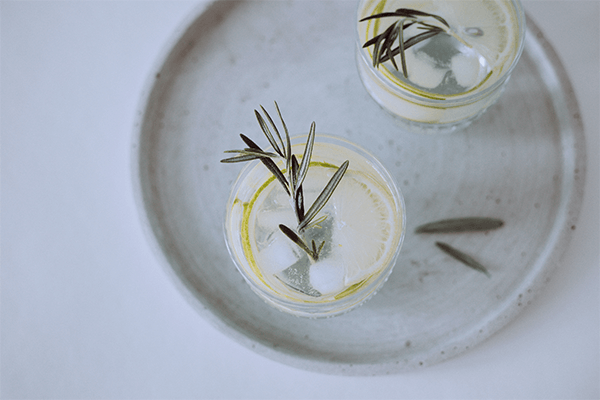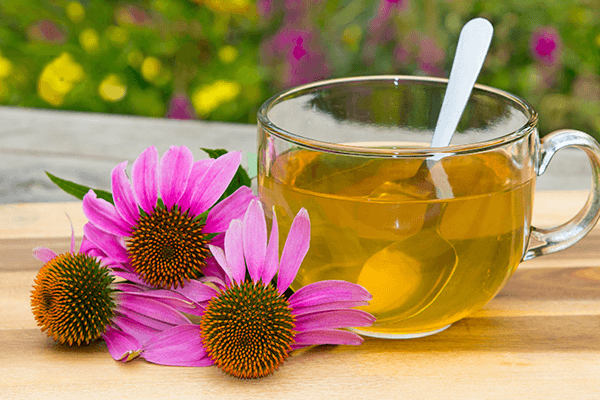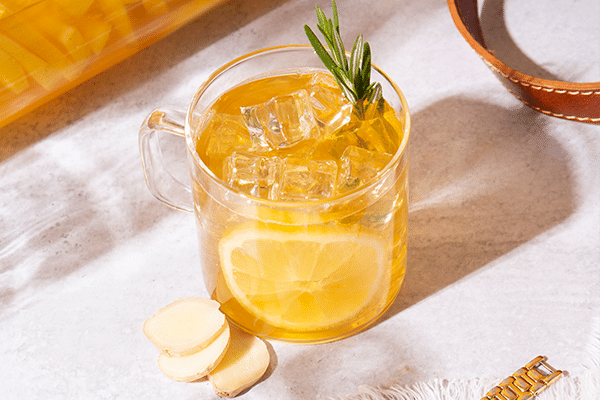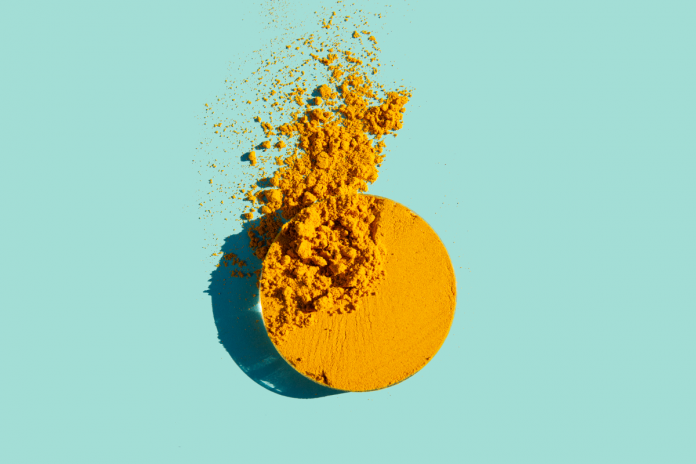Do you ever get a craving for a new tea? Perhaps something entirely different from the usual staples like green or black tea, and without any caffeine?
If so, bright-red colored hibiscus tea can make for a delicious, healthy addition to your daily tea regimen.
This remarkable herbal tea comes from a beautiful flower renowned for its striking appearance and tantalizing, tart taste. People worldwide drink hibiscus tea hot or cold for its perceived health benefits and wonderful refreshing qualities.
Keep reading to discover 5 research-backed benefits of hibiscus tea, its traditional uses from North Africa to the Americas, and an easy tea recipe to enjoy at home!
But first, we’ll begin with a short look at the characteristics and history of hibiscus.
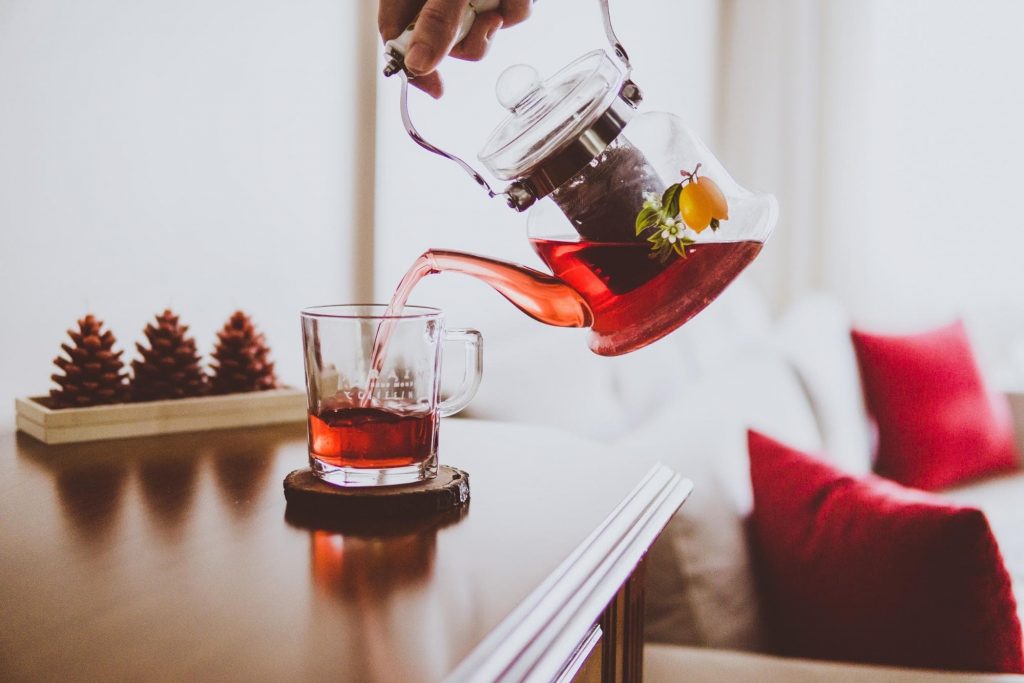
What is Hibiscus Flower Tea?
Hibiscus tea is a popular beverage made by steeping hibiscus flowers in hot water. Its mild yet tart flavor is reminiscent of cranberries, and it has a gorgeous reddish-pink hue.
Other names for hibiscus tea include roselle, “sour tea,” agua de Jamaica in Mexico and Central America, sorrel in the Caribbean, and bissap in West Africa.
Unlike true teas from the Camellia sinensis plant, hibiscus tea falls under the category of herbal tea or tisane. As a result, it’s caffeine-free.
And hibiscus isn’t actually a species of flowers, but rather a genus that belongs to the mallow family, Malvaceae.
Botanists have counted up to 200 different species of hibiscus, but the most common flower for tea-making is Hibiscus sabdariffa.
The History of Hibiscus Tea
Some botanists think Hibiscus sabdariffa originated in Sudan or West Africa, where it was first domesticated around 6,000 years ago (1)(2).
Most likely, the original historical uses of hibiscus in West Africa were as a beverage and a food. Although we’re mainly focusing on the hibiscus flower, its calyces (bud pods) and leaves are also edible and appear in many traditional cuisines.
The plant may have made its way to India, then the Americas, in the 17th century. And now the hearty, woody shrub grows in tropical and subtropical climates all around the world.
Along with its culinary and traditional medicinal uses, people today also cultivate the hibiscus plant as an ornamental and as a fiber source for ropes and textiles. It’s also known as an excellent source of vitamin c.
5 Benefits of Hibiscus Tea
- May Support Healthy Blood Pressure Maintenance
- May Support Healthy Cholesterol Levels
- May Support Healthy Blood Sugar Levels
- May Support Healthy Weight Management
- May Support Kidney Health
1. May Support Healthy Blood Pressure Maintenance
At least five randomized controlled trials (RCTs) have investigated the potential of hibiscus tea to support healthy blood pressure levels.
And according to a 2015 meta-analysis and research review published in the Journal of Hypertension, current research suggests the tea appears to have a significant beneficial effect in this regard (3).
The researchers added that tea made from Hibiscus sabdariffa is high in “organic acids, polyphenols, anthocyanins, polysaccharides, and volatile constituents that are beneficial for the cardiovascular system.”
2. May Support Healthy Cholesterol Levels
Hibiscus tea may help support healthy cholesterol and triglyceride levels, but the scientific evidence is mixed.
For example, a 2013 research review of six peer-reviewed studies concluded that “available evidence from RCTs does not support the efficacy of Hibiscus sabdariffa” to support healthy lipid levels and that more research was needed to draw a conclusion (4).
But in contrast, a 2019 paper from the journal Phytotherapy Research found that across nine clinical trials, hibiscus tea did appear to support healthy cholesterol levels, but had no effect on triglycerides (5).
Additionally, the researchers in the second paper noted that hibiscus tea may be more effective in people with metabolic disorder, type 2 diabetes, and related conditions compared to healthy people.
3. May Support Healthy Blood Sugar Levels
Preliminary evidence suggests that hibiscus flower extracts or teas may help support healthy blood sugar levels.
Unfortunately, it’s too early to say for sure, but test tube and animal studies have shown that Hibiscus sabdariffa may work by supporting healthier metabolism of sugars and other carbs. (6)(7)(8).
Some scientists think these potential effects could be due to polyphenols and flavonoids found in hibiscus such as protocatechuic acid and beta-carotene. Hibiscus also contains catechins like EGCG that are found in green tea (9).
4. May Support Healthy Weight Management
According to a small, randomized controlled trial of people aged 18-65 published in 2014, Hibiscus sabdariffa may help support healthy weight management (10).
And similar to the other effects we’ve already discussed, the researchers who conducted the trial think this particular benefit may be due to the high polyphenol content of hibiscus extracts.
Additionally, a 2019 separate paper in the peer-reviewed journal Molecules concluded that hibiscus appears to support healthy weight management and a healthy metabolism according to cell, animal, and human studies (11).
5. May Support Kidney Health
As you may have realized, some of the benefits of hibiscus tea overlap with those of green tea, including its ability to support a healthy immune system.
A 2014 study comparing the effects of Camellia sinensis leaves and Hibiscus sabdariffa flowers found that both plants have the potential to support kidney health in hospitalized patients (12).
And a separate 2016 questionnaire study found that drinking hibiscus flower tea daily may support urinary tract health in senior citizens who are in long-term care (13).
Lastly, a 2017 study of people with mild to moderate hypertension (high blood pressure) also found that drinking hibiscus tea may help support healthy kidney function (14).
Historical or Traditional Uses of Hibiscus Tea
Modern scientific research into the health benefits of this lovely red tea is relatively recent, but the historical and traditional uses of hibiscus highlight many additional uses going back hundreds of years or longer.
North African, Egyptian, and Sudanese medicinal traditions tout the benefits of hibiscus to lower body temperature, promote heart health, and as a diuretic.
And in folk medicine in other regions of Africa, hibiscus is commonly used to ease spasms, combat bacteria, and expel worms and other parasites. People there also make a topical salve or paste from the hibiscus flower or calyx to prevent wounds from becoming infected.
Also, in Iran and other Middle Eastern countries, hibiscus is a traditional treatment for high blood pressure, cholesterol and body fat .
In traditional Chinese medicine, hibiscus is considered sour and cooling, benefitting the kidney meridian. Its traditional uses include clearing heat, promoting appetite, and as a diuretic, anti-inflammatory, and antibacterial remedy.
Finally, people in Mexico and Central America sometimes use hibiscus tea as a digestive aid, to increase bile production and stimulate peristalsis (movement of food along the digestive tract). In large amounts, hibiscus tea may act as a laxative.
How to Enjoy Hibiscus Tea at Home
You can make hibiscus tea from fresh, frozen, or dried hibiscus flowers or calyces (buds). If you’re looking for quality and flavor, we recommend steering clear of tea bags.
And regardless of which form of hibiscus you use, the process is essentially the same:
- Bring water to a boil
- Pour 8 ounces of near-boiling water per 1-2 teaspoons of loose or ground hibiscus flowers or buds
- Optional: add cinnamon, cloves, ginger, lemon, and honey (or another healthy natural sweetener)
- Steep for 5-10 minutes
- Strain
At this point you can serve your hibiscus tea hot, or you can leave it in the fridge to cool down overnight and serve iced tea the next day.
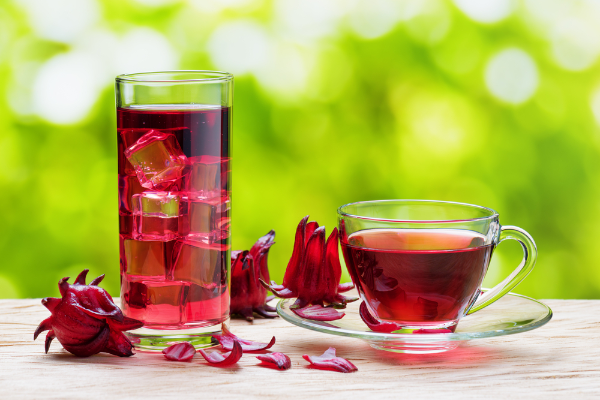
Who Should Avoid Hibiscus Tea?
Hibiscus flowers and tea are generally recognized as safe (GRAS) by the United States FDA, with no known serious side effects (15).
However, some people do (rarely) have adverse reactions or allergies to Hibiscus sabdariffa or other members of the Malvaceae (mallow) plant family.
It’s unlikely, but if you notice any symptoms after drinking hibiscus flower tea, stop drinking it immediately and speak to your doctor.
And it’s always a good idea to consult your doctor before starting any new supplement, including herbal teas, especially if you have a medical condition or currently take prescription drugs.
Also, there’s not enough research to demonstrate that hibiscus tea is safe for nursing or pregnant women–therefore, they should steer clear of drinking it to remain on the safe side.
Final Thoughts
Few herbal teas possess the rich history and worldwide renown of Hibiscus saffradita.
Whether you’re looking for a caffeine-free hot tea alternative or a cool, refreshing iced beverage, hibiscus flower tea is sure to satisfy you.
And not only that, but emerging science indicates that it has some of the same beneficial polyphenols and other antioxidants as green tea, plus novel compounds not found in other plants.
As a result, more and more research is pointing to remarkable health benefits from drinking hibiscus.
But is hibiscus tea a worthy challenger to true teas like green or black tea? Try it and let us know in the comments below!


